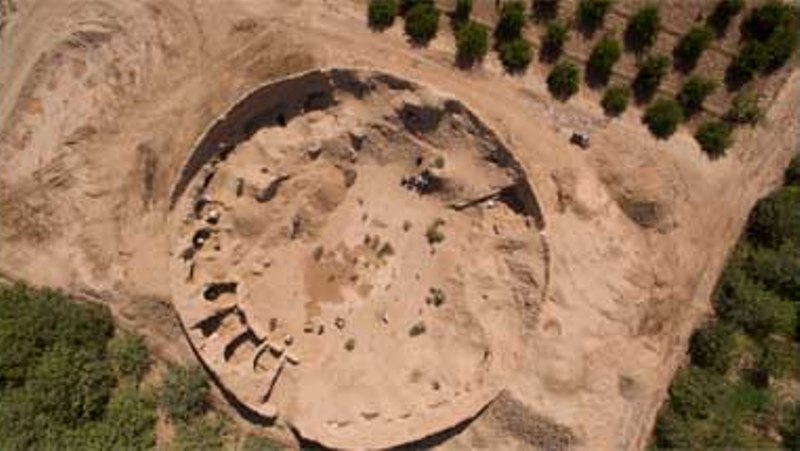Sunday 30 July 2017 - 13:22
Story Code : 270307
Zoroastrian Ossuaries discovered in southeastern Iran
The Public Relations Office of the Research Institute of Cultural Heritage and Tourism (RICHT) quoted head of the first season of explorations and probing in the Tower of Silence in Torkabad, as saying the first season of archeological explorations in Torkabad Tower of Silence (Dakhma) was conducted in the month of Ordibehesht (April 21, May 21) this year aiming to survey the authenticity of placing the dead bodies before buzzards with the collaboration of archeologists, bone specialists, topographer, photographer, designer and repairer.
The plan of Torkabad Dakhma is in the shape of a circle with a diameter of 34 meters the walls of which are made with strata, adding that the entrance of the Dakhma is on the eastern side which had been blocked with adobes at the last stage of leaving the place, he said.
Rahbar said studies have shown that each of the rooms are an ossuary where the bones had been placed in an irregular shape in two or three layers and covered with soft soil.
Out of the six rooms over 12 different large boxes of different bones of the body such as skulls, leg and arm bones were collected, he added.
He went on to say that finding large amount of bones in the Zoroastrian ossuaries indicates large accumulation of Zoroastrians in the Ilkhan era in Torkabad.
It is believed that Zoroastrians would place the dead bodies in circular environments on the highest point far from the city so that buzzards would east their flesh and then they would collect the stones and put them in a place called ossuary (place for putting the bones).
�Our studies show that placing the dead bodies in front of the buzzards has no relation with Zoroastrian religion rather it is a ritual tradition of ancient Iranians' he added.
The archaeologist noted that the Zoroastrians had been highly vulnerable and were looking for supporters who assist them both spiritually and materially and there are evidence that in the 8th century correspondences had been made between Zoroastrians in Torkabad and the Persians in India.
# Tags











